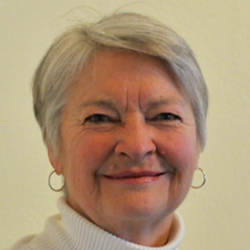
People like to play with physical and social laws and regularities, to construct imaginary universes, to step into such universes and look around. We enjoy games, drama, books, and other renderings of such fictional universes. We find them fun. People like to make models. These are commonly models close to our own world with carefully selected critical differences. But we can only inhabit a universe that gives us ground to stand on—or its equivalent.
Those of us familiar with mathematical logic or theoretical computer science know that models are important to formal theory, where a theory is simply symbols formed into axioms together with all the statements that follow from them, and that an interpretation is a domain, or set of objects, along with some way of associating those objects with the appropriate components of the statements. And we know that an interpretation that makes all the axioms and other statements true, that is, a model (in its mathematical logic sense), demonstrates consistency of the theory. Almost any mathematical logic text will provide a thorough treatment of model theory. See Boolos and Jeffrey 1974 for an account that does not gloss over the details, or Kleene 1967 for an authoritative account that lets no detail escape.
It looks like fiction adheres to model theory. Both, in effect, present an artificial world, a theory, by proposing rules that give its objects and properties and their associations, their nature and relationships. This activity is called—especially in science fiction—”worldbuilding,” and studied in literature as narrative theory. Those theories come to life through interpretations. This sense of “interpretation,” as defined above, is not the theme or literary contribution, as the word might be used in literature, but that sense might also apply as we consider the models of fiction.
Let’s consider some examples of theories and interpretations induced by worlds.
Thistown and Thattown
Suppose an author wants to write the story of Thistown and Thattown, each of which lies on the River Flowind, 10 miles long from headwaters to confluence. Debbie and Darcie, young women who are former war nurses live in Thistown, 47 miles as the crow flies from Thattown. Darcie has never seen a hypodermic needle, and doesn’t know how to give her elderly son a shot… Inconsistencies abound! The interpretation given by the particulars of the story, with its conflicting measures of distance and ages and other issues, does not bear out the theory embodied in our understanding of way the world works. This author is in deep trouble, and we abandon him to his fate.
Numbers xx, yy, and zz
Here is the theory:
xx zz yy > (zz + xx)
No interpretation will satisfy that, because no number xx (under the standard interpretations of ‘>’ and ‘ yy + zz and (2)
Presburger Arithmetic
A much more important exemplar is Presburger Arithmetic, consistent as shown by its model in the natural numbers ℕ. This matters. This tells us that our conception of additive arithmetic is solid, meaningful, and able to generate dependable truth.
Motley Properties
Suppose we want to write an odd story in which some possessions have the peculiar property that their size increases as their color gets darker, and not only that, but some integer encoding of the name of the owner decreases as the color gets darker. We are relying on a theory about a set S1 of objects with properties size and color, and a set S2 of owners with property name and its encoding, and a set of relations among those objects. What if S1 is automobiles and S2 is people, the integer encoding is pretty much anything, and so forth? No good—we know plenty of counter-examples to the claim that large cars are darker in color than relatively small cars, not to mention counterexamples to the bizarre bit about the names, under any encoding. But (as the word “interpretation” implies) there might be other domains and associations that can be made to fit the system defined by the statements above. (If you the reader are waiting for a clever interpretation that provides a model… sorry.)
A work of fiction is consistent when the objects, events, and relationships do not strike discords; when we, the readers, can participate via imagination in what’s going on, without restraint, comfortably and coherently; when the inferences to which we are led align with what we already understand. Enduring works of fiction from Greek tragedies to “King Lear” and beyond show the power of derivation of future circumstances from past circumstances. Though a foolish consistency be the hobgoblin of little minds, a proven consistency be the rock upon which reasoning rests, the reasoning that allows us to make sense of the proposed world, to fill in its blanks.
In the great bulk of fiction where the ambient universe is our own, with the familiar physics and social norms, biology and temporal cycles, the necessity for worldbuilding shrinks to the negligible. The reader of fiction assumes, sensibly enough, that the imaginary world aligns with our general knowledge except as specified otherwise. That’s why science fiction must take care to specify otherwise. In the sci-fi writer’s handbook by Ochoa and Osier (1993), as the authors provide detailed frameworks of scientific facts, they note that science fiction is “more than anything else, an intense examination and manipulation of knowledge: scientific, historical, and political.” That manipulation, for specification of a world in “hard” sci-fi (respecting our laws of physics), requires a lot of preliminary work, says Michael Brotherton, author and astronomer, requiring, for instance, complex backtracking through a spreadsheet to adjust physical parameters to the gravity of the chosen locale. (We bypass the popular science fiction and fantasy that gain wild popular appeal in spite of shaky foundations in any coherent science, real or imagined, acknowledging that audiences are often content not to push the interpretation too far.)
Authors that set stories in the mundane world, identical to ours except for the fictional characters and local events in focus, are following the common practice described by the narrative theorist Marie-Laure Ryan as the accessibility relations “identity of properties” and “compatibility of inventory” (Ryan 1991). In the crime stories and mysteries that constitute another genre of popular fiction, other standards regarding circumstances, coincidences, and revelations are suggested (Auden 1948). They would serve as axioms; they would become part of the theory, and a work based on that theory would be assessed by how faithful is the interpretation. Note that in murder mystery fiction, the adherence to reality in the background is offset by the departure from reality in the formula. No murder, as far as I can tell, has ever—ever!—been committed in a closed society made up of intriguing suspects where the detective forges through misleading clues to a revelation that comes as a complete surprise. The thousands of novels that we turn out under that paradigm may confuse posterity about life in our society.
Computer games also rely heavily on imaginary built worlds, but the player probes a closed computable system rather than a messy world with indeterminate boundaries. As in hacking, where the agent tries to guess the rules of a system in order to gain access to resources, computable systems restrict the nature of the blanks to fill in. Consider models in games versus models in fiction as illustrated by the detective board game Clue. In a round of Clue, the killer is found through repeated application of a single propositional calculus inference rule, Resolution, which constitutes the theory, a rather impoverished theory. In a mystery novel, the protagonists move through space and time, secondary stories and events, development of character, and sly presentation of hypothetical models incorporating identity of the perpetrator that seem plausible only to be undermined by a fact (a newly exposed proposition), exploiting the much richer interpretation afforded by the mundane world as a theory.
If we are to take the analogy seriously, we must test it by applying the components of model theory to fiction, adapting the definition given by mathematical logic.
- In fiction, where is the theory? The story is not the theory. The theory is the assumptions that underlie the story, serving as axioms, and that may remain largely tacit, as backstory for characters or as the specifications of worldbuilding. A good author does not weary the reader with direct fulsome accounts of the worldbuilding or backstory (Klems 2013), but allows the specifications to emerge as necessary. For mundane fiction, the theory is our universe itself, commonly called “the world,” or rather, the theory the grounds it, known to us only in bits and pieces.
- In fiction, what is the domain? Anything goes; that is, the set of possible objects may be drawn from the familiar, including people, forces, events, artifacts, or a domain of aliens and attendant objects, or an unknown domain that contains such things as brillig and toves.
- What is the interpretation? The interpretation is the elements of the story—the manifestation of the system or theory in terms of the particulars from the domain and how they behave. Although revealed dynamically, the interpretation is static, an association or assignment that fulfills the (tacit) theory, so it’s not the narration itself. The narration is the vehicle of interpretation.
- What is proven to be true? Any events, characters or other fictional elements of the interpretation that are derived from the theory (the assumed or built world) are granted the warrant of truth, fictional truth anyway. Although lively discussion continues about exactly what it means, most narrative theorists accept that statements such as “Sherlock Holmes lived at 221B Baker Street” can be called true.
- What enjoys the consistency entailed? The reader! In fiction, the security of a consistent foundation provides the groundwork for appreciation. Fiction not only grounds the narrative in the background theory, but, conversely, it can postulate, through an interpretation presented with a conviction of its truth, axioms of the background theory, as “Lord of the Flies” reveals unsavory laws of human behavior.
Both fiction and formal theory require consistency, secured by models, which are interpretations that make the constituent statements true in the appropriate world. Such a result helps tie formality to reality. So what is the real affordance provided by consistency; what does it allow us to do? Consistency allows us to tell what’s going on, and it allows us to figure out more about what’s going on. In mathematical logic, the mechanisms of formal systems solve our problems. In the real world, sometimes fiction, conscientiously contemplated, solves our problems.
References
Auden, W.H. 1948. “The Guilty Vicarage: Notes on The Detective Story, By an Addict.” Harper’s Magazine 196[5]:406-12.
Boolos, George S. and Jeffrey, Richard. 1974. Computability and Logic. Cambridge University Press.
Brotherton, Michael. 2016. Personal communication, December 5th.
Consistency. (2016, December 24). In Wikipedia, The Free Encyclopedia. Retrieved December 29, 2016, from https://en.wikipedia.org/w/index.php?title=Consistency&oldid=756491313
Kleene, Stephen. 1967. Mathematical Logic. John Wiley & Sons, Inc.
Klems, Brian. 2013. “How to Weave Backstory Into Your Novel Seamlessly” in editor’s blog “The Writer’s Dig.” Writer’s Digest online.
Ochoa, George and Osier, Jeffrey. 1993. The Writer’s Guide to Creating a Science Fiction Universe. Writer’s Digest Books.
Ryan, Marie-Laure. 1991. “Possible Worlds, Artificial Intelligence, and Narrative Theory.” Indiana University Press.
Robin K. Hill is adjunct professor in the Department of Philosophy, and in the Wyoming Institute for Humanities Research, of the University of Wyoming. She has been a member of ACM since 1978.



Join the Discussion (0)
Become a Member or Sign In to Post a Comment